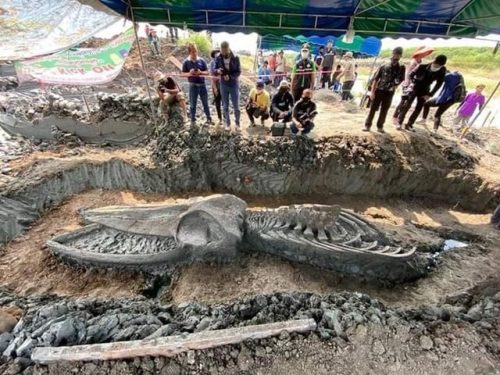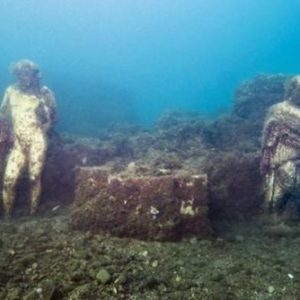
In the world of paleontology, every discovery is a window into the Earth’s distant past, shedding light on creatures that once roamed our planet. The recent revelation of an immaculately preserved 39-foot leviathan skeleton in Thailand has captivated scientists and enthusiasts alike.
This extraordinary find is believed to be up to 5,000 years old, providing us with a rare glimpse into Earth’s ancient history. In this article, we will explore the details of this remarkable discovery, its significance, and the mysteries it unveils.
The Leviathan Emerges
The discovery of a leviathan skeleton of this magnitude is a once-in-a-lifetime event. This astonishing find was unearthed in Thailand, and it has left researchers in awe due to its exceptional state of preservation. The leviathan, an ancient marine creature, is thought to have been as long as 39 feet, making it a true giant of its time.

Radiocarbon dating estimates suggest that this remarkable specimen is approximately 5,000 years old, dating back to a time when the Earth’s oceans were home to a diverse range of prehistoric creatures. The preservation of such an ancient leviathan skeleton is a testament to the unique geological conditions that allowed it to survive through millennia.
A Glimpse into Earth’s Ancient Oceans
The discovery of this leviathan skeleton provides paleontologists with a rare opportunity to learn more about the Earth’s ancient oceans and the creatures that inhabited them. While the exact species of this leviathan is yet to be determined, its size and characteristics offer valuable insights into the marine life of that era.
Leviathans, commonly referred to as sea monsters, were apex predators of their time, dominating the prehistoric seas. They were equipped with formidable jaws filled with sharp teeth, enabling them to hunt and devour other marine life. The discovery of such a well-preserved specimen allows researchers to study the creature’s anatomy, behavior, and ecological role in depth.

Preservation Marvel
The exceptional state of preservation of this leviathan skeleton is a marvel in itself. The natural processes that allowed this ancient creature to remain intact for thousands of years are a subject of great interest to scientists. It is believed that unique sedimentary conditions and the absence of scavengers contributed to its remarkable preservation.
The skeleton provides an opportunity for detailed analysis, including the examination of bone structures, tissues, and even potential DNA remnants. Such findings can offer insights into the leviathan’s genetic makeup and its place in the evolutionary history of marine life.

Unraveling Ancient Mysteries
The discovery of the 5,000-year-old leviathan skeleton in Thailand presents a fascinating opportunity to unravel some of the mysteries surrounding prehistoric marine life. Researchers are eager to explore questions about the leviathan’s role in the ecosystem, its feeding habits, and how it fits into the broader context of Earth’s ancient oceans.
Additionally, this remarkable find highlights the importance of preserving and protecting our planet’s geological heritage. It serves as a reminder of the wealth of knowledge hidden beneath the Earth’s surface and the need for continued exploration and conservation efforts.

The discovery of the immaculately preserved 39-foot leviathan skeleton in Thailand is a momentous event in the world of paleontology. It offers a rare and invaluable opportunity to study an ancient marine giant, providing insights into Earth’s prehistoric oceans and the creatures that once thrived within them.
This remarkable find not only fuels scientific curiosity but also underscores the importance of preserving our planet’s geological heritage for future generations to explore and appreciate. As researchers delve deeper into the mysteries surrounding this ancient leviathan, we can anticipate exciting revelations about Earth’s distant past.






